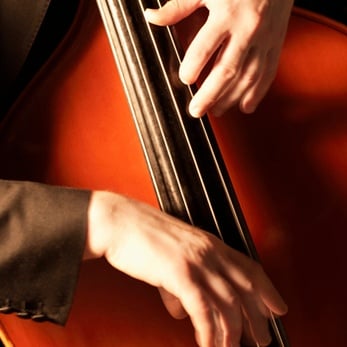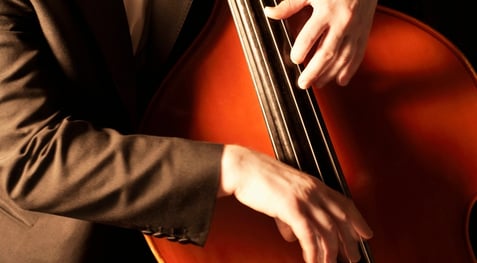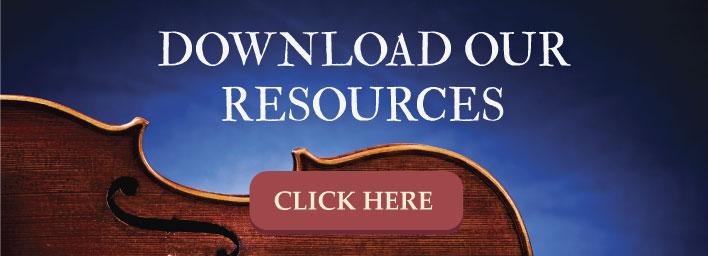

Knowing how to play the double bass, or any string instrument, is a versatile and beneficial skill. However, the first few months of instruction on the bass can be quite a struggle for new students because of the size of the instrument. Basically, you’re learning specific fingering (left-hand) techniques and methods on a very large fingerboard, so it involves a considerable amount of stretching and muscle training. Moreover, the double bass has its own unique set of peculiarities. Like all string instruments, you need to develop a certain “feel” for the proper execution of note placement, so that the sound that you produce resonates exactly the way you intended it.
Many students wrestle with the same type of bass fingering issues, but it can help to know that the majority of these problems are faced by all beginner bass players. They largely revolve around developing proper form and muscle memory. If you can develop your bass fingering techniques correctly at first, you’ll find that building upon a strong foundation is easier than having to re-learn the basics. And although the bass does present its own unique challenges, it offers a splendid musical outlet, for many varied musical genres, that is in large demand if you plan on pursuing a professional career.
There are some very clear parameters used for correct bass fingering. In fact, although there are a number of methods taught, the issues students face tend to revolve around developing left-hand form. These do’s and don’ts will help you resolve any problem areas so that you can define your hand position for better intonation.
“Do” relax your hand. Before playing with your left-hand, observe its natural curve when it’s completely relaxed. Just hang your arm down and then look at the shape that your hand is making. The arch that your fingers naturally create when at rest is that same curvature that you need to maintain for proper bass fingering.
“Don’t” collapse your fingers at the joints. Maintaining that constant curve, or arch, with your hand will provide superior muscle memory training, and help you keep the pressure right at the fingertip, where you need it. You can hear the difference it makes in tonal quality by experimenting with pad or tip of your finger to apply the pressure.
“Do” press the strings using only your fingertips. You can check to see whether or not you’re using the tip, rather than the pad of your fingers by gripping the neck tightly with your hand in position and then observing where the “line” indentation appears. The line should be very close to the top of your finger, not where the “fingerprint” is centered.
“Don’t” use your knuckles to apply pressure. It’s very important for preventing overuse injuries to allow the weight of your arm and shoulder to supply the required weight on the string. Imagine the weight traveling through your arm, up over the arch of your hand, directly to the fingertip.
“Do” practice bass fingering stretches even without your bass. Learning the double bass requires you to stretch your index finger further away from your middle (2nd) finger in order to basically divide your hand span into three, fairly equal sections. A great way to practice your stretches is to use a pencil as a prop. Pick it up with the natural curve in your left hand and fingers, and then move the first finger back and forth, away from the second.
“Don’t” raise your fingers off the neck. Unless you are working on vibrato, there’s no reason to have your fingers raised. Essentially, you’re just making it harder and taking more time to return to the fingerboard. Keeping your fingers down will help you transition to next level techniques like pivoting or open hand, easier.
“Do” keep your thumb opposite your second finger on the back of the neck. Your thumb should lightly grip the neck, but not squeeze. As you play different strings and make your shifts, your thumb will travel around the neck and vertically. For example, when you’re positioning on the E string, your thumb should rotate around the neck so that it stays approximately opposite your 2nd finger. Your thumb should be mobile and follow the movements of your bass fingering.
“Don’t” squeeze the neck to apply pressure. Again, a relaxed shape to your hand with a nice arch in the fingers will allow you to use your arm weight for pressure. Squeezing the neck to help overcome the slow action can eventually lead to chronic injury.
“Do” practice the entire length of the fingerboard early on, and pay attention to the phrasing so that you can make your shifts on the mobile or stable beat, as needed.
The double bass is a versatile, beautiful instrument. By learning the right bass fingering (left-hand) techniques early, you’ll make progress quicker and improve your intonation.


